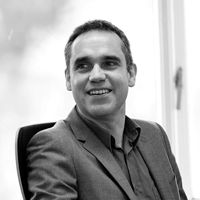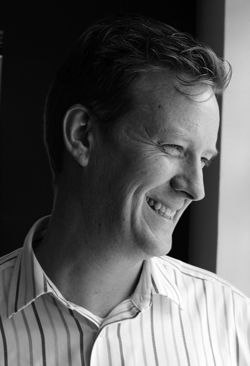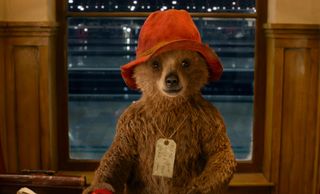There's an ongoing debate right now over how far the Oscars should go in representing the diversity of society. It's a similar argument to those taking place in many areas of society.
But for those working the 3D industry, the Oscars regularly sparks an altogether different and quite unique 'diversity' debate – whether motion capture artists should be counted as actors.
Specifically, this year's argument was over whether Andy Serkis should be eligible for Best Actor for his expressive portrayal of lead ape Caesar in Dawn of the Planet of the Apes.
What's your favourite VFX movie? Take part in our survey and you could win a subscription to 3D World magazine!
It wasn't actually his face on the screen, but without his physical and voice acting, the animators wouldn't have brought the character to life in the same way.
So where do you draw the line between acting and CG? And where do you draw the line between digital makeup and animation? We caught up with industry experts to ask their opinion…

Phil Elderfield, entertainment product manager for Vicon, which provides software and systems to motion capture professionals, is firmly in the Yes camp.
Get the Creative Bloq Newsletter
Daily design news, reviews, how-tos and more, as picked by the editors.
"I believe we're at a point where the technology and the skill of the teams involved allow a sufficiently truthful recreation of an actor's performance," he argues. "I think we should let an actor be eligible."
He recognises that motion capture is a team effort, of course. "We should never ignore or forget the crucial contribution from CG and animation artists and motion editors," he says. "But I see no reason why the awards structure can't find a way to honour the people as well as the performer."

Importantly, he points out, "the reason we use mocap in the first place is to get at the skill and talent of the actor. A great performance which is passed through the 3D process is as deserving of consideration as one that's passed through a 2D process."
Lee Danskin, CTO at Escape Technology, begs to differ though.
While he pays tribute to Andy's acting abilities – "I have yet to see any better" – he argues: "That's not what ends up on screen. The 3D artistry really plays its part."
Hein Beute, product manager for motion sensor technology provider Xsens, agrees.

"The emotions, expression and identity of the actor or actress are a big part of the final piece" he says. "But the artists are all crucial in making a performance believable.
"An animator can add to or change the motion capture data – sometimes due to a change in the script. So the final product really is a fusion of motion capture animation and live action."
Audiomotion's MD Mick Morris, agrees that the actor's contribution should be praised: "If both the performance and direction are poor then no amount of clever editing is going to fix that," he says.

But at the same time, including mocap actors in the same Oscar category as other actors would be an insult to all the artists and technicians who contribute to the creation of the character. "There are simply too many artists and animators involved in the creation of a believable animated character," he argues.
"We've recently been working on a performance-capture movie and have had 40-45 people in the studio every day," he says. "To credit one actor would be a massive injustice." Instead, he suggests a separate award such as Best CG Character or Best Performance Capture Character would would be more appropriate.
That's unlikely to happen any time soon: performance capture is a very new discipline and one which, Escape Studio's technology director Lee Danskin points out, "is still extremely niche"; in contrast, traditional animation has been around for decades and yet the Best Animated Feature category was only added in 2002.
A separate award?
It would perhaps be better to look to other awards for such recognition, believes Mick. "The Visual Effects Society goes much further than the Academy in recognising VFX work," he believes.
"Best Animated Creature comes closest to something we might win or play a part in winning. Even there, though, I think keyframe animated characters are still favoured over the motion-captured characters."

And when it comes down to it, whether you're an actor or an artist, surely it's the respect of the audience and your peers that matters?
"There's enough willy-waving going on, we don't need awards to prove anything to anyone!" remarks Mick, reminding us it's not just about Andy Serkis: "Most recently, Toby Kebbell's performance as Koba in Dawn of the Planet of the Apes was excellent," he says. "His work alongside movement expert Terry Notary and top notch VFX really helped bring the Koba character to life."
Sooner or later the Academy will recognise performance-capture performances: maybe next year...?
Win a subscription to 3D World!
What's your favourite VFX movie? Take part in our survey and you could win a subscription to 3D World magazine!
Like this? Read these
- How VFX wizards brought the GoT's dragons to life
- Hands-on review: Adobe After Effects CC
- The designer's guide to working from home

Thank you for reading 5 articles this month* Join now for unlimited access
Enjoy your first month for just £1 / $1 / €1
*Read 5 free articles per month without a subscription

Join now for unlimited access
Try first month for just £1 / $1 / €1
Tom May is an award-winning journalist and editor specialising in design, photography and technology. Author of the Amazon #1 bestseller Great TED Talks: Creativity, published by Pavilion Books, Tom was previously editor of Professional Photography magazine, associate editor at Creative Bloq, and deputy editor at net magazine. Today, he is a regular contributor to Creative Bloq and its sister sites Digital Camera World, T3.com and Tech Radar. He also writes for Creative Boom and works on content marketing projects.
